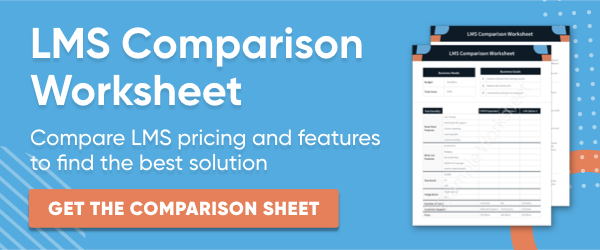 In the U.S., manufacturers are short 450,000 employees, according to the Bureau of Labor Statistics.1 Because of the shortage, manufacturing companies need practical tips on how to get more done with fewer workers - they need to increase productivity while keeping the skilled staff they have happy.
In the U.S., manufacturers are short 450,000 employees, according to the Bureau of Labor Statistics.1 Because of the shortage, manufacturing companies need practical tips on how to get more done with fewer workers - they need to increase productivity while keeping the skilled staff they have happy.
That may sound like a tall order, but it’s possible, especially if you start when workers first enter your company. By starting their manufacturer training programs off the right way and following through with relevant, valuable content, manufacturers can promote productivity and make the most of the resources they have.
3 Tips for Creating a Manufacturing Training Program that Increases Employee Productivity
1. Have training creators design a value map
When onboarding managers, it’s important to include the most helpful and relevant courses that will decrease workers’ time to productivity. This will make the onboarding process more productive and engaging for learners.
Value mapping will help training creators easily decide which courses to include in a new manufacturing employee’s learning path. An effective value map indicates which skills are crucial to increased productivity, which skills are important and have an average impact, and which skills have a low impact on productivity. A value map can guide training creators in choosing only high-value courses for a prospective manager’s onboarding program.
Skills covered in courses with lower priority shouldn’t necessarily be omitted from a new employee’s learning experience, but they can be delayed. For example, you can teach those courses during an employee’s downtime, once workers have the most vital skills under their belt and are contributing to the company.
2. Invite new hires to solve real problems
New and seasoned manufacturing employees should be given the opportunity to work together, as well as with managers, to brainstorm solutions to real issues your company is experiencing. This promotes productivity through collaboration. Also, if an employee solves a company problem, the company benefits immediately and leaders are able to make existing processes more efficient.
You can explain recent challenges in social learning activities, such as group discussions or online forums, but you can also include persistent company challenges in eLearning quizzes. Explain the problem as an open-ended scenario, then let learners explain what they would do to resolve the issue.
To motivate your employees to step up and offer solutions to your company’s problems, offer them recognition and rewards such as an employee appreciation event, monetary bonuses, a free lunch, or a featured spot on an employee recognition wall. “You can set-up a board in the office and have everyone at the office fill it with sticky notes that contain congratulatory messages to exemplary co-workers,” stated Employee Recognition in the Workplace: the Why and How.2
Rewards and recognition show workers that your company values their input and encourage more of the same behavior in the future. It will also prompt other employees to give creative problem solving a try.
3. Use training software that frees up new L&D professionals’ time
Many manufacturers have limited human resources, including learning and development professionals. To free up time for your L&D team members to be more productive, invest in training software with administration features that reduce their responsibilities. Some of these features should include:
- Assistance with course setup, customization, and branding
- A training plan that provides instruction for creating effective courses
- A support team that helps with LMS installation and maintenance
With increased time to be productive, L&D professionals could put their energy into researching innovative training programs that will help your company get ahead of the competition. For example, an increasing number of manufacturing companies are going digital and automating various processes.2 An L&D employee could put together a thorough course that would increase productivity by providing cutting-edge skills in operating smart machinery.
Use a Manufacturer LMS to Drive Productivity and Meet Business Goals
Is the current manufacturing skills gap and employee shortage putting pressure on your business? If so, an effective LMS for the manufacturing industry can help you create a training program that equips workers with vital skills right from the start and promotes productivity. 
References:
1. Washington Examiner. Worker shortage for high-skill manufacturing jobs. https://www.washingtonexaminer.com/policy/economy/manufacturing-hungers-for-workers.
2. efront Learning: Employee recognition in the workplace: the why and how. https://www.efrontlearning.com/blog/2018/04/employee-recognition-workplace-benefits-ways.html.
2. Forbes. Smart machines are the future of manufacturing. https://www.forbes.com/sites/louiscolumbus/2018/09/30/smart-machines-are-the-future-of-manufacturing/#425f891d5d13.






